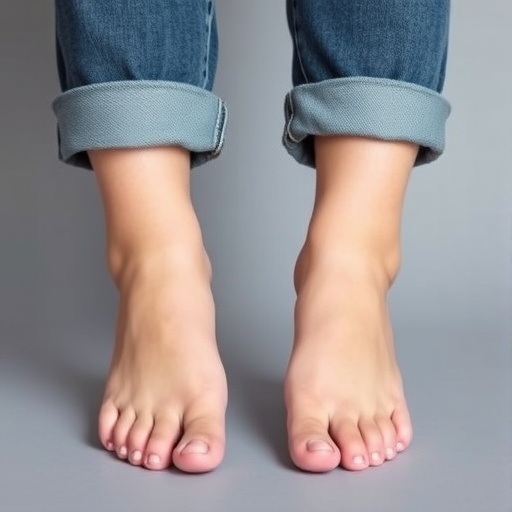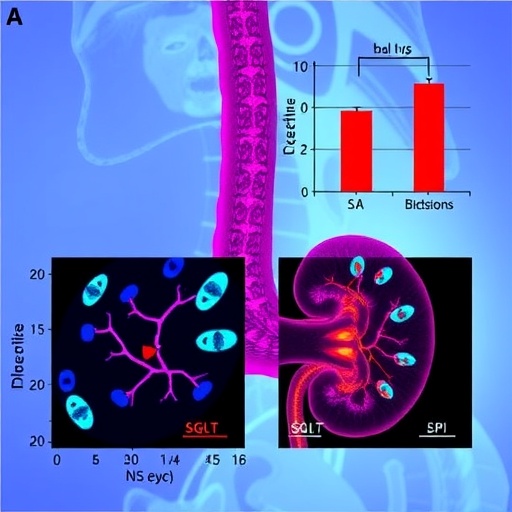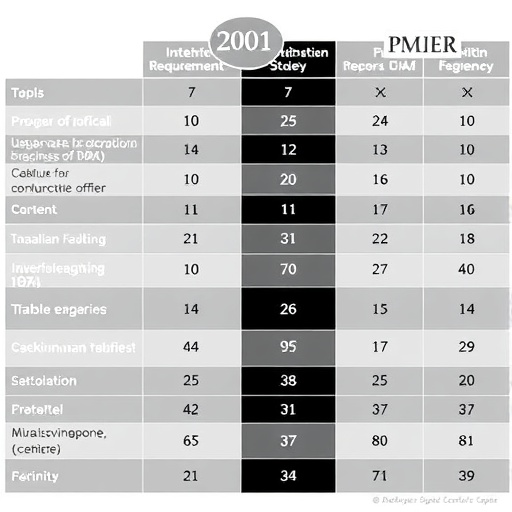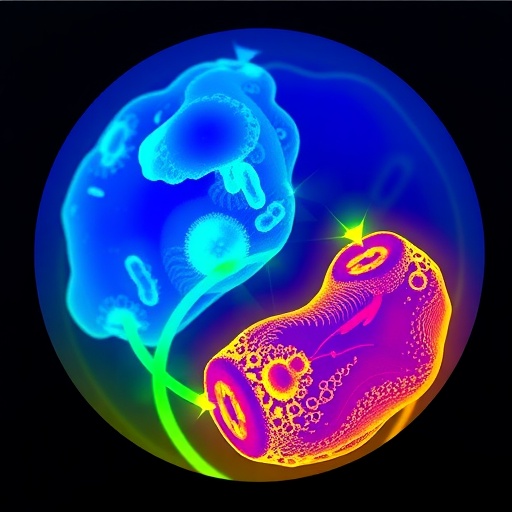PROTECT YOUR DNA WITH QUANTUM TECHNOLOGY
Orgo-Life the new way to the future Advertising by Adpathway
Recent research has unveiled an intriguing connection between pediatric obesity and foot morphology, shedding light on an often-overlooked aspect of children’s health. The findings emerged from a large-scale cross-sectional study utilizing advanced photogrammetry techniques, conducted by an international team of researchers. With the prevalence of obesity among children rising alarmingly, understanding its implications on various aspects of health and development is more critical than ever. This study provides groundbreaking insights into how excess body weight may influence children’s foot structure, which could have significant ramifications for their overall health and mobility.
Foot morphology refers to the shape and structure of the foot, which can display considerable variations in response to different physical conditions, including obesity. Previous studies have primarily focused on the connections between weight and health complications such as diabetes or cardiovascular issues, often neglecting how weight impacts the structural integrity of the body, particularly in growing children. The research led by Büyükçelebi and colleagues aimed to fill this gap, exploring how varying levels of obesity may correlate with changes in foot morphology.
Utilizing state-of-the-art photogrammetry—a technique that creates 3D models using photographs—allowed the researchers to achieve highly detailed measurements of participants’ feet. This innovative approach is particularly well-suited for pediatric studies, as it minimizes discomfort compared to traditional methods of measuring foot dimensions. Each child in the study had their foot digitally captured, allowing for extensive analysis of anatomical features such as arch height, foot width, and overall foot length. This detailed evaluation set the stage for the team to identify specific morphological changes linked to differing obesity levels.
The study engaged a large sample size, comprising children from diverse backgrounds and geographical locations. This diversity enhances the generalizability of the findings, offering a broader understanding of how pediatric obesity manifests physically in foot structure across different demographics. Researchers were able to classify the children into various groups based on their Body Mass Index (BMI), which served as a primary measure of obesity. By comparing foot morphology across these groups, significant patterns began to emerge, illustrating how foot structure altered with varying degrees of obesity.
Interestingly, the results indicated that children with higher BMI exhibited distinct morphological characteristics in their feet. For example, wider and flatter foot shapes were prevalent among obese children, while those within a healthy weight range displayed more standard foot structures. These variations could indicate greater susceptibility to injuries or discomfort, as well as potential long-term implications for mobility. The findings underscore a critical insight—obese children may require more tailored approaches to footwear and physical activity to ensure they support healthy foot development.
The implications of these changes extend beyond immediate physical discomfort or aesthetic concerns. Foot structure plays a fundamental role in overall biomechanics, affecting how children walk and run. Disturbances in foot morphology can lead to altered gait patterns, increasing the risk of musculoskeletal injuries as children engage in physical activities. By understanding the relationship between obesity and foot morphology, parents, educators, and healthcare providers can better manage children’s health by promoting effective interventions early in life.
Moreover, the link between obesity and foot morphology emphasizes the broader crisis of childhood obesity. As rates of obesity in children continue to rise globally, the repercussions of excess weight must be addressed through comprehensive public health initiatives. The insights from this research could inform policies aimed at promoting healthier lifestyles among children, including nutritional education and increased physical activity. Realizing that obesity has multifaceted consequences, including changes to critical areas like foot health, advocates for more holistic approaches to combating this pervasive issue.
The findings also pave the way for further research in related fields. Understanding the correlation between obesity and foot health may inspire explorations into other anatomical changes, such as the impacts on the spine or lower extremities. Researchers can build on this study by investigating interventions that could mitigate the structural changes associated with obesity, ensuring children maintain optimal foot health as they grow. Further longitudinal studies could also explore how these morphological changes evolve over time, providing more insights into long-term implications.
Additionally, the role of footwear cannot be overlooked in this conversation. Footwear plays an essential role in foot development, and the study raises awareness about choosing appropriate shoes for children, particularly those who may be at a higher risk of developing foot problems due to obesity. Creating footwear geared towards supporting the unique needs of children with altered foot morphology can promote comfort and prevent injuries.
On a community level, increasing awareness about the relationship between obesity and foot health can empower parents to make informed choices regarding their children’s lifestyles. This includes fostering an environment that encourages healthy eating habits and physical activity at home and within schools. Initiatives that provide resources for parents can lead to more effective management of their children’s weight and foot health.
In conclusion, the recent study highlights a significant association between pediatric obesity and foot morphology, revealing the urgent need to address this issue from multiple angles. As the fight against childhood obesity continues, incorporating insights about foot health may serve as a vital piece of the puzzle. By ensuring that children receive the support they require in all aspects of their health—including their feet—society can work towards fostering a healthier, more active generation.
In light of these findings, the medical community is urged to consider foot morphology as a critical factor when assessing and managing pediatric obesity. This study serves as a call to action—not only to further research but also to enact practical changes that can enhance the well-being of children across the globe.
Subject of Research: Pediatric obesity and foot morphology
Article Title: Association between pediatric obesity and foot morphology: insights from a large-scale cross-sectional study using photogrammetry.
Article References:
Büyükçelebi, H., Açak, M., Eken, Ö. et al. Association between pediatric obesity and foot morphology: insights from a large-scale cross-sectional study using photogrammetry.
BMC Pediatr 25, 628 (2025). https://doi.org/10.1186/s12887-025-05966-1
Image Credits: AI Generated
DOI: https://doi.org/10.1186/s12887-025-05966-1
Keywords: pediatric obesity, foot morphology, photogrammetry, childhood health, foot health, biomechanics, obesity implications.
Tags: advanced techniques in foot measurementchildren’s health and developmentfoot shape changes in childrenimpact of obesity on children’s healthimplications of obesity on mobilitylarge-scale cross-sectional study on obesityobesity-related health complications in childrenpediatric obesity and foot morphologyphotogrammetry in pediatric researchsignificance of foot health in pediatric populationsstructural integrity of children’s feetvariations in foot structure due to obesity


 4 hours ago
11
4 hours ago
11





















 English (US) ·
English (US) ·  French (CA) ·
French (CA) ·